I'm particularly annoyed about the Meconopsis because I've been bragging about how easy they are from seed and urging readers not to be intimidated by the genus. They have a reputatation for being difficult from seed to maturity but they really aren't if you follow a few simple steps and accept that they're short-lived perennials and should be re-sown anuually to ensure a constant supply. The following applies for all the species I have grown, and probably more.
Use a peat-style compost, sow thinly on the surface and either cover very lightly with perlite or just water with the rose of the can turned upwards so the pot gets no more than a light shower as it's important not to accidentally wash all the seed to one side (there's no substitute for experience!). The water should settle the seed into the surface of the compost so all you need to do now is label (with date) and either cover with a plastic lid if you've used a tray or a freezer bag and elastic band for a pot. Stick in a shady spot outside in Autumn or early Spring and watch the a magic. Should take about a 10 days for the first cotyledons to appear.
I can't show you any of this (Apart from the surviving grandis and betonicifolia I also have integrifolia and have saved a couple of years and bought mature plants of superba and napaulensis) because it's snowing and positively Dickensian out there.
 |
| Clematis "Niobe" just before the weather turned to sick. |
Crikey,! it's a blizzard out there! In the time it's taken me to upload that Clematis another couple of inches of snow have accumulated! It's at times like this that a young man's thoughts turn to South Africa and a ridiculous amount of Gladioli seed. I just can't help myself and G. Tristis germinated so easily, and is thriving in the current climate, I'm not as intimidated as I was.
 |
| These G. Tristis came up like Cress, all over one night, about two weeks after sowing. There are about 100 seedlings, which should look a bit like this:. |
So, as usual I've gone mad and bought seed of probably every species of Gladiolus that exists including Gladiolus splendens
So, as usual I've gone mad and bought seed of probably every species of Gladiolus that exists including Gladiolus dalenii
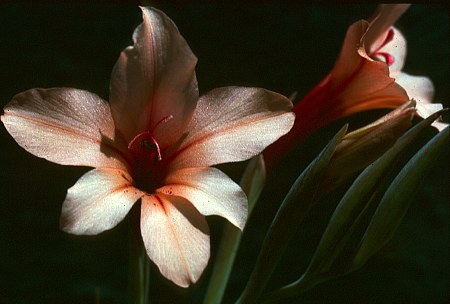 |
| G. miniatus |
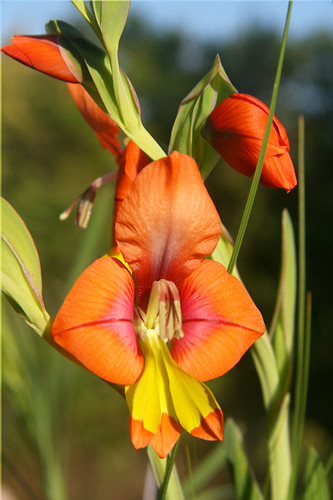 |
| G. alatus |
 |
| G. gracilis |
 |
| G. floribundus |
 |
| G. venustus |
 |
| G. papilio "Ruby" |
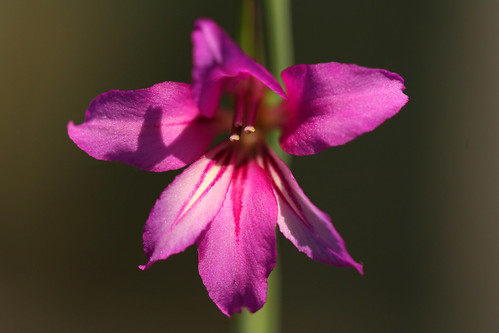 |
| G. communis ssp. byzantinus |
 |
| G. papilio in flower. Photo: Banwy Valley Nursey |
From seed they should flower in their second year although I won't be able to give away seed as they'll all be growing so close to one another the bumblebees will be making genetic graffiti!
I've acquired some more Irises and Lilies, both seed and bulb, but more about them when I don't have to head into Oxford Street to buy toys for my nieces.
But here are a couple of seed purchase you couldn't make up:
 |
| Lapeirousia silenoides |
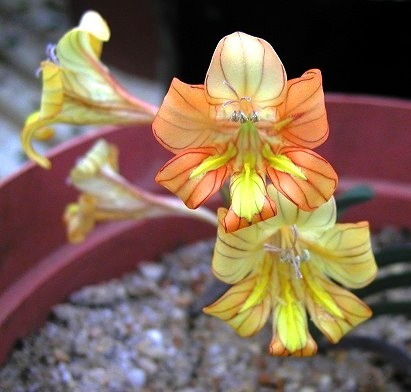 |
| Tritonia karooica |
Enjoy the snow, think of it as a blanket on your plants, happy Saturday, the plantboy.
STOP PRESS!!!!
I have just been back to the post office depot having gone once already at 7 this morning. More in hope than expectation I went back in the early afternoon as it was supposed to be open until 3pm due to season and a minor snowfall causing delivery delays of weeks. Amazingly, my package was there. It could have been a Christmas present for my other half I'm also waiting for but there was clearly plant life in that box.
On getting it unwrapped it was little 9cm pots of Irises cristata and gracilipes x lacustris. I'm familiar with Iris lacustris, having grown it with great success in Scotland in the rock garden. It's a tiny little thing no higher than 10cm and spreading out on a mat of rhizomes (leaving a "dead" patch in the middle" so occasional division, replanting just the healthy outer parts. It looks like this:
Iris gracilipes I have no prior experience of but it looks much the same only a bit taller and bushier:
Quite why someone decided to cross two largely similar species (the Great Lakes, meet The far East) to create a largely similar hybrid I do not know, perhaps it has greater vigour or more/bigger flowers. Anyway, cross it they did and it seems to have been regarded as a success because you can buy your very own ready made one today. Here it is:
Actually the flowers are held above the foliage and have rather grand falls so I can see the attraction. And I'm glad to have one. It will go straight in the strawberry planter should it ever arrive. Oh, mine looks like this:
 |
| I'm sure it will get bigger as soon as the temperature stops playing silly buggers |
Of course! Gardening is 90% optimism and 10% cockiness



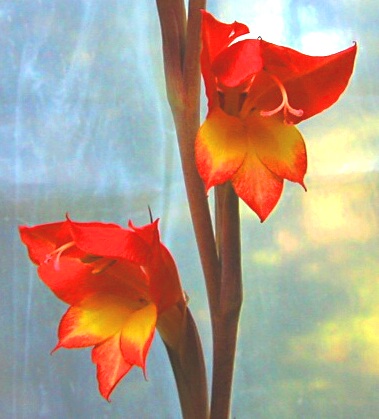


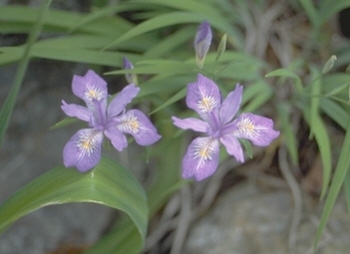



No comments:
Post a Comment